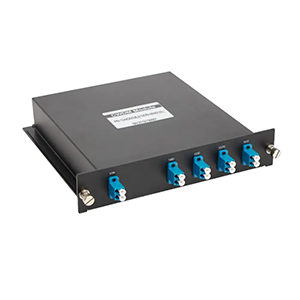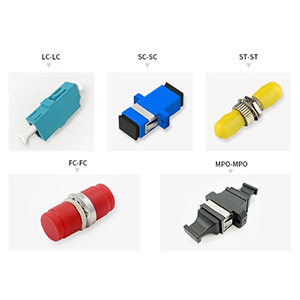Fiber optic connectors play an important role in fiber optic networks. This article will explore how to properly clean fiber optic connectors. We will first review the basic architecture of fiber optic networks and analyze the key role of fiber optic connectors. Next, we will explain the impact of connector surface dirt on network performance and introduce common types of contamination.
Then, we will list the tools needed to clean fiber optic connectors and elaborate on the cleaning process, including steps such as disassembly, wiping, and inspection. Finally, we will summarize the importance of fiber optic connector cleaning and provide users with relevant suggestions.
The role and characteristics of fiber optic connectors
Fiber optic connectors are indispensable components in fiber optic communication systems and are mainly used to connect and disconnect fiber optic lines. Their role is to ensure efficient signal transmission and minimum insertion loss.
The characteristics of fiber optic connectors include high precision, low reflection, high stability, and good anti-interference ability. Common types include LC, SC, ST, etc., which are suitable for different scenarios. They can be quickly connected and maintained, and support flexible expansion and optimization of the network.
1. Basic architecture of fiber optic network:
The basic architecture of fiber optic network includes two main parts:
- Fiber optic transmission line:
- It is composed of fiber optic cables and is used for long-distance transmission of optical signals.
- Fiber optic connector:
- Connects optical fiber and optoelectronic equipment to achieve the transmission of optical signals.
2. Key role of fiber optic connector:
The main role of fiber optic connector is:
- Realize reliable optical connection between optical fibers:
- Fiber optic connector can accurately connect two optical fibers together to ensure smooth transmission of optical signals.
- Good optical connection can minimize the coupling loss of optical signals.
Through the use of fiber optic connectors, optical signals in the fiber optic network can be smoothly transmitted between different fiber segments, ensuring the communication quality and reliability of the entire network.
Fiber optic connectors are an indispensable key component in the fiber optic network and play an important role in the construction and maintenance of the network. Reasonable selection and correct use of fiber optic connectors are essential to ensure the performance and stability of the fiber optic network.
The impact of fiber optic connector surface contamination
The surface contamination of fiber optic connectors can significantly affect the transmission quality of optical signals. Dust, oil and other impurities can increase the insertion loss of the fiber, reduce the signal strength, and even cause signal loss. In addition, contamination may cause increased reflections, generate noise, and affect the overall performance of the system.
Regular cleaning and maintenance of the connector surface is a key measure to ensure the stable and efficient operation of the fiber optic communication system. Keeping the connector clean helps to extend the life of the equipment and improve network reliability.
1. Impact of connector surface dirt on network performance:
- May cause optical signal attenuation:
- The dirt on the connector surface will cause the scattering and absorption of the optical signal, thereby causing the attenuation of the optical signal.
- May cause increased reflection loss:
- Contamination on the connector surface will increase the reflectivity of the optical signal, causing an increase in reflection loss.
These factors will have an adverse effect on the transmission performance of the entire optical fiber network, reducing the reliability and stability of the network.
2. Common types of connector contamination:
- Dust:
- Dust particles attached to the connector surface will cause attenuation and reflection of the optical signal.
- Fingerprints:
- Human skin oil and sweat will leave fingerprints on the connector surface, affecting the optical properties.
- Grease:
- Various grease substances will also contaminate the connector surface and interfere with the transmission of optical signals.
In short, the contamination on the surface of the optical fiber connector will have a serious impact on the performance of the entire optical fiber network. Therefore, during the installation and maintenance of optical fiber equipment, it is necessary to attach great importance to the cleaning and protection of the connector to avoid network quality problems caused by contamination.
Basic steps for cleaning fiber optic connectors
The basic steps for cleaning fiber optic connectors include: first, use a dedicated fiber optic cleaning tool to gently wipe the surface of the connector; second, use dust-free paper and cleaning fluid for deep cleaning; then, check whether the connector is clean and make sure there is no residue; finally, repeat the cleaning process to ensure that the connector is completely dry before insertion to ensure the best performance of optical signal transmission. Regular maintenance helps to extend the life of the equipment.
The following necessary tools are required to clean fiber optic connectors:
- Cleaning cotton swabs
- Isopropyl alcohol solvent
- Fiber optic inspection instrument
- Connector-specific cleaning box, etc.
The specific steps for cleaning fiber optic connectors are as follows:
1. Disassemble the connector:
- Carefully remove the connector from the device or fiber.
2. Clean the surface with solvent:
- Dip a cleaning cotton swab in an appropriate amount of isopropyl alcohol solvent.
- Gently wipe the connector surface to remove dust, oil and other dirt.
3. Wipe with a dry cotton swab:
- Carefully wipe the connector surface with a clean cotton swab to ensure that there is no residual solvent.
4. Check the connector status:
- Use a fiber inspection instrument to check the cleanliness of the connector end face.
- Ensure that the connector surface is clean and free of stains.
5. Carefully reinstall:
- Carefully reinstall the cleaned connector to the device or fiber.
- Be careful to keep the connector end face clean.
Through the above steps, the surface of the fiber optic connector can be effectively cleaned to avoid optical signal transmission problems caused by contamination. Regular maintenance of connector cleaning is an important measure to ensure the stable operation of the fiber optic network.
Summary
Keeping the fiber optic connector clean is the key to ensuring network performance. Our company has long focused on the research and development and application of optical communication products and has rich practical experience. We provide a full range of fiber optic connectors and their cleaning tools to meet the needs of different fiber optic network scenarios.
Our products use industry-leading manufacturing processes and have achieved excellent levels in optical performance, reliability and service life. At the same time, our team of engineers will provide you with professional cleaning training and guidance services to ensure that you can correctly master the cleaning methods of fiber optic connectors. Contact us now to learn more.
Cleaning Fiber Optic Connectors FAQ
Cleaning is essential to prevent signal loss and ensure optimal performance, as dirt or debris can cause attenuation and reflectance.
Common tools include lint-free wipes, isopropyl alcohol (at least 99%), a fiber optic cleaning pen, and a dust cap.
First, gently wipe the connector end face with a lint-free wipe moistened with isopropyl alcohol. Use a fiber optic cleaning pen for stubborn contaminants.
No, regular paper towels can leave lint and scratches. Use only lint-free wipes designed for fiber optic cleaning.
Clean the connector before plugging it in to avoid transferring dirt to the mating surface.
Clean connectors whenever they appear dirty, after exposure to dust or contaminants, and before any maintenance work.
For bulk cleaning, consider using specialized cleaning equipment, like a fiber optic cleaning machine or a bulk cleaner.
Avoid using abrasive materials, excessive force, or any cleaning solutions not specifically designed for fiber optics.
Inspect the connector under a microscope or a visual fault locator to ensure there are no scratches, smudges, or debris.
Neglecting to clean connectors can lead to increased signal loss, connection issues, and reduced overall network performance.



